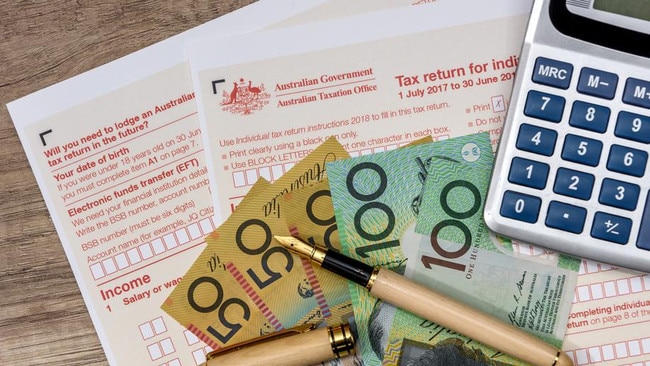How to get the biggest tax return out of your side hustle
Australians with a side hustle can make the most out of their upcoming tax returns by following these simple tips.

Breaking News
Don't miss out on the headlines from Breaking News. Followed categories will be added to My News.
Influencers and those with a side hustle may be able to cash in this tax season by making the most of their return.
As the cost of living crisis intensifies, many Australians have turned to side hustles to make ends meet.
Whether that’s ride shares, starting a small business, or even influencing - there are several things you can bring to your accountant this tax time to maximise your claim.
Personal trainer turned gym owner and influencer Jono Castano built his personal brand in order to turn his side hustle into his main business.

He started Acero gym during the Covid-19 lockdown and two years later is in charge of 18 trainers as well as being an ambassador for several brands due to his internet clout.
One of his biggest tips for small businesses is to make sure they’re claiming money spent on promoting their business.
“Advertising to promote your brand, that’s a big one that you’ll be putting into your deduction,” he said.
He uses that tax break for advertising his gym as well as advertising himself as a trainer and fitness influencer.
“With the influencer thing, we go back to the promotional side of things and say you’re doing a paid ad regarding a job, you can claim that,” he said.
“I like to do small bursts, like if you’re looking for clients and you set the location, you’ve got a little video and you do a little $100 spend (on social media advertising) to reach Kensington for example.”
As advertising and sponsorships are considered general business operating expenses by the ATO, if you keep records of what you’ve spent, an accountant should be able to claim them for you.

Mr Castano also claims any other business expenses, whether that’s gym equipment for training or a camera to shoot his Instagram content on.
There‘s currently a “grey area” over what influencers can claim in their tax deduction according to H&R Block communications manager Mark Chapman.
“So if somebody is an influencer as their business, then absolutely they can claim a whole host of tax deductions in terms of using the computer, the cost of a camera, for example, so that‘s absolutely legitimate,” he said
“However, there‘s a few people who do it as a sideline, and it isn’t really a serious thing. It’s not really a business and therefore, there is a restriction in relation to those individuals in terms of what they can claim.”
The line between whether or not an influencer can claim expenses on their tax refund is if they have received an income from it.
“If people are going out, they’re pitching themselves as an influencer and they’re getting contracts with a particular brand, then there isn’t really any doubt that they’re in business,” he said.

“Having said that, somebody that‘s just going out and posting pictures of themselves on social media, that doesn’t qualify as a professional influencer.”
Similar to advertising, Mr Castano recommends getting custom T-shirts for your business or brand in order to claim those as well, as uniform costs can be claimed on tax, unlike regular clothes.
“We encourage the trainers to buy a white T-shirt and then we get them to go to AS Colour and then stamp the logo on and then they wear that,” he said.
For other side hustles, there are a number of expenses that can also be claimed this tax season.
One popular side hustle is ride-share driving or meal delivery, which attracts a large number of deductions including vehicle expenses, fuel expenses, repairs, parking fees, phone plan fees and more.
Mr Castano recommends going to an expert to see what you can claim.
“Get as much advice as possible because at the end of the day, you want to get as much return as you can.”
Originally published as How to get the biggest tax return out of your side hustle




